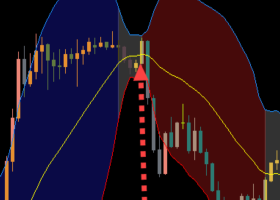-
Long-Term Traders:
- Long-term traders may place more emphasis on entry, as their decisions often rely on thorough analysis and long-term market trends.
-
Short-Term Traders (Day Traders, Scalpers):
- Short-term traders may prioritize precise exits to capture small, quick profits.
-
Trend Following Strategies:
- For trend-following strategies, entry is crucial to capitalize on an ongoing trend, while exit aims to close the position as the trend weakens.
Both entry and exit must be integrated into a coherent trading strategy. A balanced understanding and appropriate implementation of both aspects are critical. Traders should adjust their strategy and prioritize each component based on market conditions and personal preferences.
Trend-Following Indicators:
-
Moving Averages (MA):
- Simple Moving Average (SMA) and Exponential Moving Average (EMA) help identify trends by smoothing price data.
- Moving Average Crossovers can signal potential trend changes.
-
Average Directional Index (ADX):
- Measures the strength of a trend. A rising ADX suggests a strong trend.
-
Parabolic SAR (Stop and Reverse):
- Provides potential reversal points and indicates the direction of the trend.
Momentum Indicators:
-
Relative Strength Index (RSI):
- Measures the speed and change of price movements. Overbought or oversold conditions can be indications of potential reversals.
-
Moving Average Convergence Divergence (MACD):
- Consists of MACD line and Signal line. Divergence between them can signal trend changes.
-
Stochastic Oscillator:
- Identifies overbought and oversold conditions to help predict reversals.
Volume-Based Indicators:
-
On-Balance Volume (OBV):
- Measures buying and selling pressure based on volume. A rising OBV can confirm an uptrend.
-
Volume Oscillator:
- Analyzes the difference between two moving averages of volume to identify changes in volume trends.
Volatility Indicators:
-
Bollinger Bands:
- Consists of a middle band being an N-period simple moving average, an upper band at K times an N-period standard deviation above the middle band, and a lower band at K times an N-period standard deviation below the middle band. Useful for identifying volatility and potential reversal points.
-
Average True Range (ATR):
- Measures market volatility and can be used to set stop-loss levels.
Support and Resistance Indicators:
-
Pivot Points:
- Identify potential support and resistance levels based on the previous day's high, low, and close.
-
Fibonacci Retracement:
- Uses horizontal lines to indicate areas of support or resistance at the key Fibonacci levels.
Oscillators:
-
Commodity Channel Index (CCI):
- Measures the current price level relative to an average price level over a given period. High or low values may indicate potential reversals.
-
Williams %R:
- Similar to the Stochastic Oscillator but is plotted upside-down. Values above -20 indicate overbought conditions, and below -80 suggest oversold conditions.
Combining Indicators:
- Traders often use a combination of indicators to confirm signals. For example, using both MACD and RSI can provide additional confirmation of a trend.
It's important to note that no single indicator is foolproof, and relying on multiple indicators can help reduce false signals. Additionally, always consider market conditions, timeframes, and risk management when using indicators in your trading strategy. Experiment with different indicators and combinations to find what works best for your trading style and objectives.


